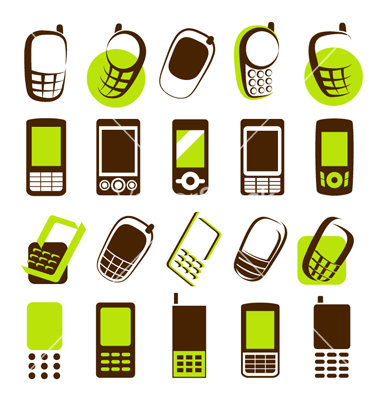Uniqueness of Design Elements of Mobile Phones
 Design can be explained as the process of giving something a deliberate aesthetic form.
Design can be explained as the process of giving something a deliberate aesthetic form.
Design of mobile phones is one of its primary success factors. Key features of a mobile phone design elements may relate to physical design of the handset, user input, mobile context, usability of the devise, design of content and others.
Portability marks one of the most important features of design elements of mobile phones. Finding an effective balance between portability and usability is one of the most challenging tasks for modern mobile handset designers. On one hand, customers expect conveniently usable keyboards and wide screen sizes from modern mobile phones so that the device can be used with no or minimum strain eyes.
On the other hand, designing large keyboards and enlarging screen sizes in a mobile phone can only be achieved by enlarging the physical size of the devise with negative implications on its portability. Therefore, designers of mobile phones need to find an effective balance between usability and portability.
Generally, The design process of a mobile phone may include the following stages:
1. Design brief. This initial stage in mobile phone design process involves the formulation of initial ideas for the design. Initial ideas for the design may be obtained from customer feedback of the previous models or changes in the marketplace associated with innovation or breakthrough.
2. Product design specifications stage relates to the market research and analysis of the problem. During this stage data related to customer needs and wants in relation to mobile phone designs are going to be collected and analysed.
3. Concept design is a stage in design process where outlines of key features of the design are developed. For a mobile phone concept design may include specification of the size of the screen, size and form of buttons, colour of the phone etc.
4. Testing stage is associated with obtaining and analysing feedback from focus groups and other primary data sources in relation to concept design. Testing can be made online, offline or using the combination of both platforms.
5. Detail design stage involves designing all of the dimensions and specifications of the product taking into account feedback obtained as a result of initial testing.
6. Manufacturing and further testing constitutes the last stage in mobile phone designing process, which results in the development of a new product. Further testing continues even after the launch of mass manufacturing of the product, as this information can represent a highly valuable business intelligence to be used in new product development.
Although design process specified above comprise common stages used by the majority of mobile phone manufacturers, some firms might follow alternative processes of designing their new products.
Key features of any given mobile phone need to be highly relevant to customer needs in order to for this specific brand and model to succeed in the marketplace. Design features and functionality of the latest models of mobile phones offered by market leaders such as Apple, Samsumg, HTC, and others meet this requirement to an adequate extent.
Customer needs are highly dynamic and this fact has to be taken into account by mobile phone manufacturers in new product development. Moreover, wth regular breakthroughs and innovations in relation to various functions and capabilities of mobile phones, patenting functions, designs and trademarks has become a major issue in this sector. Specifically, “the number of handset patent infringement filings to the US courts grew from 24 cases in 2006, to 84 cases in 2010” (Kelion, 2011) and this tendency is likely to continue.
References
Kelion, L. (2011) “Mobile phone makers wage war to protect their patents” BBC, Available at: http://www.bbc.co.uk/news/business-15343549
